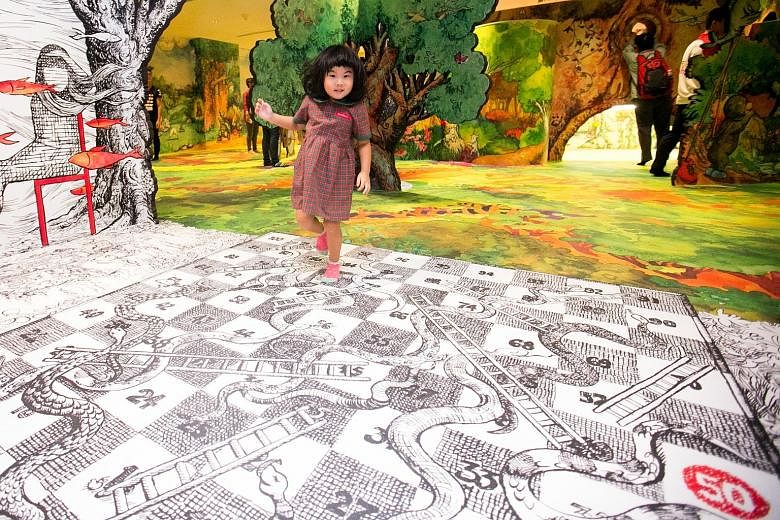With its stately grey facade, lines, and marble flooring, the National Gallery Singapore looks all business. But as adults make their rounds, peering at the art on display, children clatter excitedly through the halls too.
A crowd of them makes a beeline for the Keppel Centre for Art Education, which has drawn more than 150,000 visitors - children, youths and parents among them - since the gallery's opening in November last year.
Here, children rule the roost. This colourful 1,000 sq m space, made possible by a $12-million donation by Keppel Corporation, is set aside just for them - and an imaginative slew of activities lies in wait.
When it comes to the visual arts, museums and galleries - long considered the domain of grown- ups - have been reeling in children with dedicated spaces and exhibitions catered specially to them.
And there are no limits to what children can learn in arts classes too. Schools and centres offering such classes let children explore a range of techniques and mediums.
Art Loft, founded by artist and early childhood educator Wong Seet Fun more than a decade ago, lets children experiment with Chinese ink and teaches them how to do a storyboard.
Parents can also sign up for Art Loft workshops to learn how they can teach art at home.
Museums too are courting the young in a big way. The Singapore Art Museum's (SAM) annual children's exhibition - now in its sixth edition - returns this month.
The whimsical Imaginarium: Over The Ocean, Under The Sea, will run at SAM at 8Q from May 14 to Aug 28. Children can play with immersive and tactile works, such as Underwater Labyrinth. This is an installation by Singapore chef Janice Wong, which offers a glimpse of a re-created deep seabed of luminescent colonies of "corals". They are made up of more than 1,300kg of sugar and chocolate.
"Art is important for the 'human-ness' of society and contemporary art has the capacity to speak about our place in the world and to touch on issues affecting society and the world at large," says the exhibition's co-curator Andrea Fam, 28.
"As a child's cognition is still in development, it is a ripe time to expose him to the visual arts, where the non-verbal language of contemporary art installations provoke and expand his imagination while fostering curiosity."
SAM also has a Learning Gallery where works of art are curated with younger audiences in mind.
At the Keppel Centre for Art Education, children can create their own works or try their hand at playing curator, selecting art pieces for an exhibition.
They can even wander around an artist's studio - recreated from artist and 2012 Cultural Medallion recipient Milenko Prvacki's very own - to get some insight into the creative process or go for art- making workshops with their parents.
Ms Suenne Megan Tan, 41, the Gallery's director of education and programmes, says: "We believe that it is important for children to enjoy the visual experience of looking at art while also acquiring the ability to decode and relate to the art they see."
She adds: "We want to encourage children to use their imagination, think critically, solve problems creatively, innovate, collaborate and communicate. These are important skill sets for the 21st century."
Nur Asyiqin Mohamad Salleh


